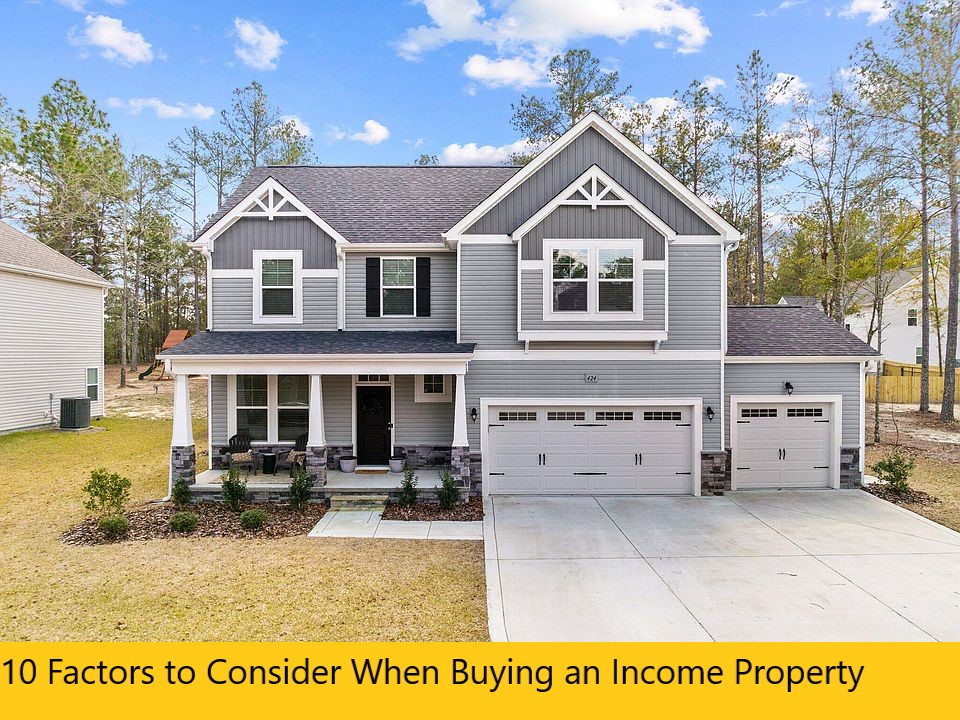10 Factors to Consider When Buying an Income Property
10 Factors to Consider When Buying an Income Property – Are you looking to purchase a residential rental property to boost your investment portfolio return? Investment properties can be exciting and very rewarding if you make the right choice. But income and other rewards aside, investing in real estate can be daunting for a first-time investor.
Real estate is a tough business and the field is peppered with land mines that can obliterate your returns. That’s why it’s important to do detailed research before you dive in so you’re on top of all the pros and cons of real estate investing.
Here are the top 10 features to consider when shopping for the right income property, plus some additional information to make your search easier and more productive.
KEY TAKEAWAYS
- Vet the neighborhood thoroughly—its livability and amenities are key.
- A neighborhood with a high vacancy rate is not a good sign.
- Find out an area’s selling prices to get a sense of local market value.
- Research the average rent in the neighborhood and work from there to determine if buying a rental property is financially feasible.
- Compare all your costs to the rent you may charge to project your profit.
1. Neighborhood
The neighborhood in which you buy will determine the types of tenants you attract and your vacancy rate. If you buy near a university, chances are that students will dominate your pool of potential tenants and you could struggle to fill vacancies every summer. Be aware that some towns try to discourage rental conversions by imposing exorbitant permit fees and piling on red tape.
2. Property Taxes
Property taxes are one of your costs and they can vary widely across your target area. High property taxes are not always a bad thing—for instance, in a great neighborhood that attracts long-term tenants. But there are unappealing locations that also have high taxes.
A municipality’s assessment office will have all the tax information on file, or you can talk to homeowners in the community. Be sure to find out if property tax increases are probable in the near future. A town in financial distress may hike taxes far beyond what a landlord can realistically charge in rent.
3. Schools
Consider the quality of the local schools if you’re dealing with family-sized homes. Although you will be mostly concerned with monthly cash flow, the overall value of your rental property comes into play when you eventually want to sell it. If there are no good schools nearby, it can affect the value of your investment.
4. Crime
No one wants to live next door to a hot spot of criminal activity. Online state and municipal sites, the local police, and the public library should have accurate crime statistics for neighborhoods. Check the rates for vandalism and for serious and petty crimes. Don’t forget to note if criminal activity is on the rise or declining. You also might want to ask about the frequency of a police presence in your neighborhood.
Read More : Mypass-a-grille.com

5. Job Market
Locations with growing employment opportunities attract more tenants. To find out how a specific area rates for job availability, check with the U.S. Bureau of Labor Statistics (BLS) or visit a local library.
If you see an announcement about a major company moving to the area, you can be sure that workers in search of a place to live will be interested in rentals. Bear in mind that the type of business involved may cause housing prices to go up or down. You can assume that if you don’t mind having the company in your area, your renters probably won’t either.
6. Amenities
Tour the neighborhood and check out the parks, restaurants, gyms, movie theaters, public transportation links, and all other perks that attract renters. City Hall may have promotional literature that can give you an idea of where the best blend of public amenities and private property can be found.
7. Future Development
The municipal planning department will have information on developments or plans that have already been zoned for the area. If there is a lot of construction going on, it is probably a reliable sign of growth. Watch out for new developments that could hurt the price of surrounding properties. Additional new housing could also compete with your property.
8. Number of Listings and Vacancies
If a neighborhood has an unusually high number of listings, it may signal a seasonal cycle or a neighborhood in decline. Find out which it is. In either case, high vacancy rates force landlords to lower rents to attract tenants. Low vacancy rates allow landlords to raise rents.
9. Average Rents
Rental income will be your bread-and-butter, so you need to know the area’s average rent. Make sure any property you consider can provide enough rental income to cover your mortgage payment, taxes, and other expenses.
Research the area well enough to gauge where it might be headed in the next five years. If you can afford the area now but taxes are expected to increase, an affordable property today could mean bankruptcy later.
10. Natural Disasters
Insurance is another expense you will have to subtract from your return, so you need to know just how much it’s going to cost you. If an area is prone to earthquakes or flooding, insurance coverage costs could eat away at your rental income.
